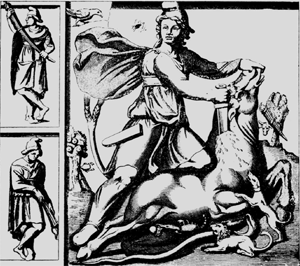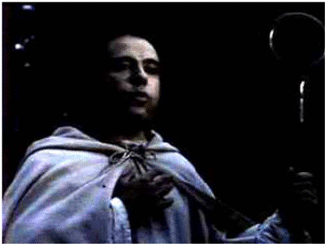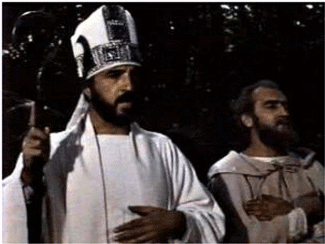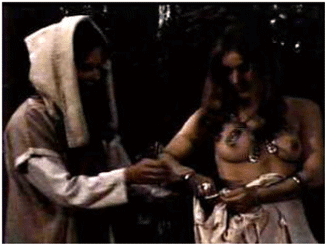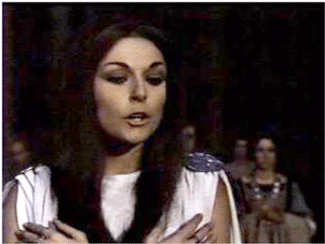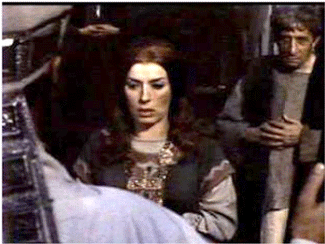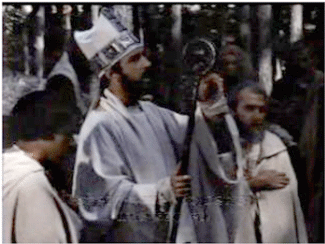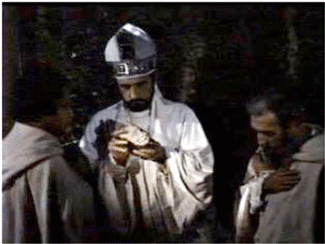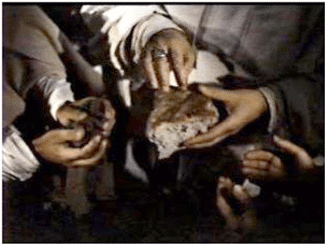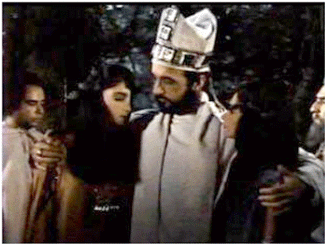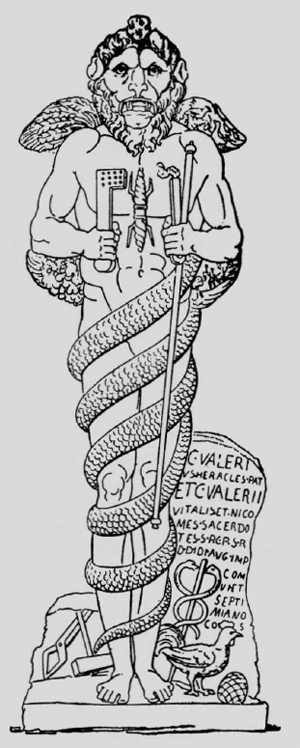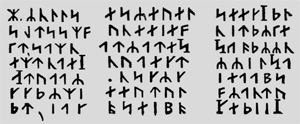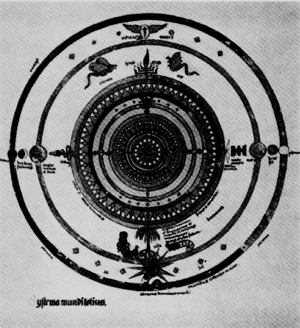CHAPTER SIX: Wandlungen und Symbole der Libido
SOLAR MYSTICISM AS SCIENCE
ALTHOUGH A DISCUSSION of Jung's Wandlungen und Symbole der Libido (1912) at this point removes it from the chronological development of Jung's life and thought that I will construct in part 2 of this volume, it is perhaps more important to include this section here where it follows discussion of the long Germanic tradition of volkisch sun worship that Jung was so much a part of.
It is true, as so many commentators have said, that Wandlungen is only a partially intelligible book. Although there is more cohesion in the much shorter first part than the enormous second part, Jung piles layers upon layers of mythological references into almost every paragraph in this four-hundred-page book. The connection between one thought and the next is not clear, and as Kerr has pointed out, there are many internal contradictions in the proposed revisions of the libido theory of psychoanalysis that made the work practically unintelligible to even the psychoanalytic community of Jung's day.
For Jung, the writing of the book mirrored a personal transformation process in himself. He began work on it early in 1910, and part 1 of the work formed the basis of his very first public lecture devoted to the psychological interpretation of mythological material. He delivered the lecture on 16 May 1910 to a group of Swiss psychiatrists in Herisau, Switzerland, and sent a copy of it to Freud for comments. Although this early manuscript has not survived, we have Freud's comments and criticisms in an undated letter from late June or early July of 1910: "Despite all its beauty, I think, the essay lacks ultimate clarity." [1] Whether Jung's essay ever developed any clarity is disputable.
Jung's self-professed haste in producing Wandlungen was due, in part, to his desire to be in print with his own unique interpretation of comparative world mythology. His associate from the Burgholzli, Franz Riklin, had been the first to do so with a psychoanalytic interpretation of fairy tales published in 1908. Between October 1909 and 1912 Jung and his associates read mythological works and then collected evidence of mythological content in the dreams, fantasies, hallucinations, and delusions of the patients of the Burgholzli. Jung had also by this time found a small publication by an American woman he never met, Miss Frank Miller, which contained many of her poetic reveries and visions. [2] Using this as a starting point, Jung wrote the massive two-part Wandlungen, published as a one-volume book in late 1912.
SYNCRETISM
The unintelligibility of Wandlungen has often been attributed by Jung and his disciples to his haste, and by his detractors to his "encounter with narcissism" [3] or perhaps even psychosis. Peter Homans captures the flavor of the reader's first impression of Jung's text when he concludes, "It is, in short, a record of Jung's own fantasies, not an interpretation of the myths and symbols of the past." [4] Kerr -- who probably understands Wandlungen from a psychoanalytic perspective better than anyone ever has -- "second[s] Homans's view, the longest of these essays is nothing more or less than the record of Jung's own fantasy life, recklessly projected onto ancient symbols and myths." [5] However, both Homans and Kerr have tried to understand Wandlungen from a purely psychoanalytic perspective. Perhaps we can discern a different meaning in this baffling text.
It may be argued that the confusing combination of "several different essays hurriedly stitched together at the last moment"6 that comprise Wandlungen are due to its essential nature as a work of syncretism. Syncretism is usually defined as an attempted blending of irreconcilable principles or tenets, as in philosophy or religion. Or else it is the attempted blending of groups of individuals who adhere to seemingly irreconcilable religious or philosophical principles. Syncretic literature is almost always unintelligible at first to those not in the original melting pot that inspired the work in the first place, whether this is in a purely intellectual or a primarily social world. Trying to understand the Hellenistic Christianity of the various groups of two thousand years ago we call the Gnostics, for example, presents problems today for the devout Christian and occultist alike.
I propose that Wandlungen und Symbole der Libido is a syncretic work on several levels. It is, first and foremost, Jung's attempt at scientific syncretism in the nineteenth-century sense of Wissenschaft. Following Freud, Jung too claimed psychoanalysis was a science. Wandlungen was an attempt to prove this by blending the methodology of psychoanalysis with the esteemed Wissenschaften of comparative philology, comparative mythology, and evolutionary biology. It was an attempt to integrate the science of psychoanalysis with the other Geisteswissenschaften and Naturwissenschaften, indeed with the greater scientific body of knowledge of Jung's day.
A second syncretic agenda is perhaps a mystical one. It is a blending of different philosophies of personal religion based on notions of regeneration or rebirth. Psychoanalysis becomes not only a science but a way of cultural and individual revitalization -- and by this time a personal religion for Jung. In Wandlungen Jung cannot help but rely on the ideas of the volkisch movement, as around 1910 the most intelligent and accepted blend of the scholarly literature on comparative philology, comparative mythology, and evolutionary biology in German could be found in the various literatures of this movement on the differences between Aryan peoples and Semitic peoples. Volkisch ideas permeate scholarly publications from the eminent Muller and Haeckel on down to the esoteric books and pamphlets of Theosophists and other occultists, and many were used (and some cited) by Jung in Wandlungen. This is, perhaps, most apparent in the relentless syncretism of solar mythology and psychoanalysis that begins in the last section of part 1 -- "The Song of the Moth" -- and continues throughout the enormous part 2, thus making the second part of Wandlungen as bulky and unintelligible as the second part of Faust. It is especially in these sections that Jung's text becomes a liturgy of sun worship and volkisch Aryanism.
Here, perhaps, we can discern clues from Jung's personal life and letters. By 1911 and early 1912 Jung's growing estrangement from Freud was marked by a greater fascination with the symbolism of ancient mystery cults from the Hellenistic world than with traditional Freudian sexual symbolism and its application, a practice that William James, in a letter to Flournoy, called "a most dangerous method." It was the symbolism of the mystery cult of Mithras in particular that seemed to rival the sexual symbolism of psychoanalysis in Jung's own personal symbolic system during this period. [7] By 1912, Jung reenvisioned psychoanalysis as a way to achieve both personal and cultural renewal and rebirth, as is evident in some statements in Wandlungen, but which is most apparent in an article on "New Paths in Psychology" that also appeared in 1912. [8] Upon the completion and publication of this work Jung realized he could no longer live in the "Christian myth":
When I finished [Wandlungen], I had a peculiarly lucid moment in which I surveyed my path as far as I had come. I thought: "Now you have the key to mythology and you have the power to unlock all doors." And then I found myself asking what I had done after all. I had written a book about the hero, I had explained the myths of past peoples, but what about my own myth? I had to admit I had none; I knew theirs but none of my own, nor did anyone else have one today. Moreover, we were without an understanding of the unconscious. [9]
WANDLUNGEN AS SCIENCE
Jung opens Wandlungen und Symbole der Libido by suggesting that Freud and psychoanalysis can reveal something new and powerful about the ancient Greek culture so idealized by nineteenth-century Germanic Europeans. Winckelmann's serene and composed Hellas was already gone forever after the appearance of Heine, Nietzsche, and Wagner. Further, Jung implies in his introduction that ancient Greece, too, like the modern age, was the garden of sexuality. Jung reminds his reader that Freud's uncovering of the "Incest Phantasy" deep in the soul of every fin-de-siecle man, woman, and -- most shockingly -- every child, is the root of "the Oedipus legend." Even in ancient Greece, "similar passions moved mankind, and man was likewise convinced of the uniqueness of his existence." With Freud's insights, "suddenly there is opened a revelation of the simple greatness of the Oedipus tragedy," and a pulse of life originating in ancient Greece is thus found still alive in the souls of modern individuals. [10]
Jung says it is a "vain illusion" that modern individuals are more moral than the ancients, and he argues that our common bond with the people of antiquity has been forgotten. Yet this reminder by psychoanalysis has profound implications:
With this truth a path is opened to the understanding of the ancient mind; an understanding which so far has not existed, and, on one side, leads to an inner sympathy, and on the other side, to an intellectual comprehension. Through buried strata of the individual soul we come indirectly into possession of the living mind of ancient culture, and, just precisely through that, do we win that stable point of view outside our own culture, from which, for the first time, an objective understanding of their mechanisms would be possible. At least that is the hope we get from the rediscovery of the Oedipus problem. [11]
Let us examine this important statement more closely in its historical context. Winckelmann's beloved ancient Greece, so catalogued and institutionalized in museums by the twentieth century, had become banalized, reduced to pieces of statuary and mere literary references in the poetry and prose of a century of Germans. The rediscovery of the Greeks by Winckelmann, which had succeeded in awakening Kultur among the German peoples, had also revivified the Greeks and their pagan gods. Jung is arguing that modern individuals need to find the thought, passions, and especially the gods of ancient Greece that are still alive in each individual soul of today. This finding can be accomplished with the techniques of psychoanalysis, which are in Jung's pages allied with the uncovering methodologies of archaeology, philology, and comparative mythology.
Psychoanalysis literally becomes the archaeology of the soul for the first time in Jung's seminal work. It promises not only an understanding of the souls of individuals, but of modern culture as well. Perhaps most attractively, it is a way of objectively learning something new ("for the first time," Jung says) about ancient Greece and other ancient cultures. In the second part of Wandlungen, the title of the third chapter explicitly holds out such a promise: "The Transformation of the Libido: A Possible Source of Primitive Human Discoveries."
Psychoanalysis therefore can increase the knowledge of other sciences: it becomes a way to revive archaeology and philology, which had been longing for breakthroughs since the days of Schliemann and Schleicher. Schliemann used Homer as his guide to finding and uncovering the past, discovering the gold of Troy in 1873 and the graves of Mycenae in 1876. Schleicher used the language of Homer (and others) as his guide to finding and uncovering the original language of all Aryans (Indo-Europeans). [12] Psychoanalysis was the new science for adding to our knowledge of these same ancient origins by tracing the historical development of the libido in individuals (ontogeny) and in the species (phylogeny). Psychoanalysis may thus take its place among the other revered Wissenschaften. Who knows what it may uncover?
In the first formal chapter of Wandlungen, entitled "Concerning the Two Kinds of Thinking," Jung uses the literature of philosophy, psychology, and psychoanalysis to distinguish between (1) directed, rational, focused thinking whose medium is words and (2) symbolic, alogical, fantastical thought that is irrational and expressed in images. The former is the hallmark and indeed the pride of the nineteenth-century bourgeois European; the latter is found in dreams, in children, in primitives, and in the mythological thought of pagan, pre-Christian antiquity. It is also found especially in persons with serious psychotic disorders, such as dementia praecox. Our personal sediment of infantile memories shades into the archaic levels of the mythological cognition of the ancients and of primitives. These two kinds of thinking comprise the main strata of the individual psyche. If the top layer of the individual psyche is disturbed, mythological material from the ancestry of humankind reemerges in the form of delusions and hallucinations.
The symbolic method of psychoanalysis as practiced in the literature of Freud, therefore, becomes a new Rosetta Stone. It is, however, a Rosetta Stone that translates the hieroglyphs of the second type of thinking into the psychoanalytic language of the first. Until the very last chapter of Wandlungen -- "The Sacrifice," about which more will be said later -- the dynamic energy or libido in humans as biological organisms was sexual energy only in all previous psychoanalytic works. In language that obscures his intent, Jung posits a theoretical revision that he develops more fully in later works, redefining libido as a more general term for psychic energy rather than strictly for sexuality. This incompatibility of ideas is, of course, the intellectual excuse for the break between Jung and Freud.
By confirming that psychoanalysis is a science that employs a historical method of uncovering the origins not only of the development of the individual, but also of the species, Jung implies that it is ultimately grounded in biological processes. As noted earlier, Haeckel's evidence that "ontogeny recapitulates phylogeny" is the result of the successful application of the historical method to biology. Jung likewise in Wandlungen sets out to document the evolution of thought in the style of Haeckelian evolutionary biology. In Jung's case, patterns of human experience are categorized and analyzed to chart lines of development and typical patterns of strata. The basic schema, however, comes from psychoanalysis. Given Jung's attempted innovations and their internal contradictions in Wandlungen, other than the basic distinction of strata between "the two kinds of thinking," the psychoanalytic schema makes almost no sense to the reader after the first chapter.
Yet, since on a gross physical level each adult individual was once a fetus with reptilian features at one point in life, analogously, why could the thoughts and feeling, indeed echoes of libido, of the noble ancient Greeks not be evident somewhere in the soul of every European? Jung's deliberate use of Haeckelian evolutionary biology in Wandlungen implies the possibility that one day, through the historical science of psychoanalysis, biology and psychology would converge via the principle that ontogeny recapitulates phylogeny. This echoes Haeckel's similar proposal in 1899 for a "phylogenetic psychology" to study the "phylogeny of the soul." If typical stages in the development of human thought (as observable derivatives of transformations in libido) could be schematized, and then found to dovetail with the stages of biological development in humans, psychoanalysis could make a tremendous contribution to knowledge in a way unparalleled by any other science.
Again, the biological basis of his argument is implied by Jung in the first chapter of Wandlungen by invoking Haeckel's "Biogenetic Law," but not his name. Although in various places he offhandedly refers to biology, he does not develop a biological argument. [13] It is central, however, to the entire book. Biology is very much in Jung's mind when he says early in Wandlungen that: "Thus, there must be typical myths which are really the instruments of a folk-psychological complex treatment." [14]
Jung spends great effort attempting to blend the psychoanalytic method with those of comparative mythology and comparative philology. From the comparative mythology of Muller, Jung follows the method of piling example upon example of myths from different ancient cultures and those contemporary primitive cultures found in ethnographic literature. Three primary categories emerge, all interrelated: the comparative mythology of the hero, of self-sacrifice (usually in connection with the hero), and of solar myths and their predominance in all cultures and in the fantastical layer of thought in all human beings.
If examined outside of the context of the psychoanalytic literature, Wandlungen might very well be regarded as an eccentric work of Mullerian solar mythology. Jung's assumptions about the historical development of consciousness match Muller's ideas, and not surprisingly: Muller dominated European thought on the subject of comparative mythology for almost fifty years and Mullerian assumptions had seeped into the cognitive categories of nineteenth-century thought. [15] Over the course of his career, Muller developed what can only be called a cognitive theory of cultural evolution. [16] Muller argued that there was a period of human history that predated even the earliest Aryan civilizations in which human beings did not have adequate language for abstract thoughts and inexplicable experiences. This was, as Muller called it, the "mythopoetic age" in which the first Aryan gods were born. [17] The gods represented perhaps the most powerful and inexplicable forces that humans can encounter: the forces of nature, and in particular the dominant role of the sun in the natural world. As humans had a limited verbal capacity in these early days and could not process information efficiently, single words had to take on multiple meanings, both concrete and abstract. There were two primary cognitive processes at work here according to Muller, which served as heuristics: polyonymy, where one word had to carry many meanings, and homonymy, where one essential idea could become attached to several different words.
In this early mythopoetic age, many words could signify the sun, with multiple webs of associations attached to them, which would then overlap with other such webs. Thus, the ancient Vedic supreme god Dyanus could be associated with words for light, fire, brightness, clarity of thought, power, air, and dawn, among others. Muller hypothesized that as migrations separated the original Aryan peoples and as civilization developed, bringing about an increase in language and an increase in the ability to process greater and more complex loads of information, humans eventually forgot the seminal core complexes (usually Vedic gods) at the center of these webs of associations. Thus, through the decay or "disease of language," new stories were made up to account for the forgotten Vedic origins. Out of these stories Persian, Indian, Greek, Roman, Germanic, and other mythologies arose. This philological method allowed one to trace the development of the Aryan peoples step by step, back to an Edenic time before history was recorded.
Muller's excitement over peering into the dawn of human history is evident in much of his work. After arguing that the names of the "highest god" in Sanskrit (Dyaus), Greek (Zeus), Latin (Jove), and ancient German (Tiu) were essentially the same, he relates:
but I hardly dwelt with sufficient strength on the startling nature of this discovery. These names are not mere names; they are historical facts, aye, facts more immediate, more trustworthy, than many facts of medieval history. These words are not mere words, but they bring before us, with all the vividness of an event which we witnessed ourselves just yesterday, the ancestors of the whole Aryan race, thousands of years it may be before Homer and the Veda, worshipping an unseen Being, under the selfsame name, the best, the most exalted name, they could find in their vocabulary, -- under the name of Light and Sky. [18]
The symbolic method of psychoanalysis that Jung employs in Wandlungen is based on just such assumptions of the polyonymy and homonymy of the words used to describe the everyday experiences of fantasies and dreams. Often it is one idea -- sexuality -- attached to several different words that points to their ultimate origin. Jung takes this essential psychoanalytic premise and applies it to the content of world mythology ad infinitum in Wandlungen. The following digressive paragraph is only one of many such examples that fill the volume:
The symbolism of the instrument of coitus was an inexhaustible material for ancient phantasy. It furnished a widespread cult that was designated phallic, the object of reverence of which was the phallus. The companion of Dionysus was Phales, a personification of the phallus proceeding from the phallic Herme of Dionysus. The phallic symbols were countless. Among the Sabines, the custom existed for the bridegroom to part the bride's hair with a lance. The bird, the fish, and the snake were phallic symbols. In addition, there existed in enormous quantities theriomorphic representations of the sexual instinct, in connection with which the bull, the he-goat, the ram, the boar and the ass were frequently used. An undercurrent to this choice of symbol was furnished by the sodomitic inclination of humanity. When in the dream phantasy of modern man, the feared man is replaced by an animal, there is recurring in the ontogenetic re-echo the same thing which was openly represented by the ancients countless times. [19]
If Muller could be monomaniacal about tracing the origins of all human thought and culture to the sun, Jung as psychoanalyst could trace all human origins back to the genitals and their sexual functions. Jung even borrowed from the methodologies of philology and comparative mythology to do it. However, throughout this book, Jung is highly selective about the types of myths he chooses. He prefers solar myths and indeed draws his material disproportionately from Aryan cultural roots (India, Iran, and Hellenistic world, with a smattering of Wagnerian Teutonic mythology). Indeed, on the rare occasions on which Jung approaches the Semitic cultures (Jews, Arabs, etc.), it is generally with reference to Job or to Jesus and the Christian myth. He could have chosen to write, for example, a book interpreting African myths or North American Indian myths, but even in the places where, for example, Miller herself (who is quite lost in this book) provides a fantasy about an Amerindian (Chiwantopel), Jung turns to Aryan mythologies for amplification. [20] Jung's father was an Orientalist and knew Arabic and Hebrew and his maternal grandfather (whose poetry is cited in Wandlungen) was a professor of Hebraic Studies, and so sources of information about the Semitic cultures were not alien to Jung.
Hence, Wandlungen is an attempted syncretism of psychoanalysis and the German sciences most devoted to the study of Aryan culture. It is therefore a syncretic blend of sexual mythology and solar mythology as two major theories of the true ancient origins of the human soul and of human culture.
It is primarily in part 2 of Wandlungen that we find Jung also attempting to blend the historical method of psychoanalysis with the methods of comparative philology. Endless etymological digressions are inserted into the text. For the reader's sake I will not repeat any of them here. [21] When Jung was writing part 2 in late 1911 and early 1912, he apparently assigned Emma Jung to do this etymological research that appears in the book and lends it its scientific persona, at least by nineteenth-century German standards. [22]
WANDLUNGEN AS SOLAR MYSTICISM
It is not difficult to see how Jung's book would have been recommended reading among volkisch cultists or Asconan sun worshipers: almost every page contains references to solar mythology and its connection with world mythology and sexuality. Mixing sun worship with the new ethic of sexual freedom was a potent brew for Asconans thirsty for validation by established medical or scholarly authorities that they claimed so much to despise. These solar references increase in frequency starting in the chapter "The Song of the Moth" in part I, in which Jung interprets a romantic poem by Miller entitled "The Moth to the Sun." [23] Jung says that in this poem "Her Longing for God resembles the longing of the moth for the 'star.'" [24] In a manner resembling the methodology of Muller's solar mythology, Jung then reminds the reader that "in the preceding chapter the following chain of associations was adduced: the singer -- God of sound -- singing morning star -- creator -- God of Light -- sun -- fire -- God of Love." [25]
Jung's further analysis of the content of this poem makes it clear that the sun or star Miller is talking about is not an external one, but an inner one. Indeed, it is the god within. The resonance with the volkisch neopaganism of this time is accomplished by way of using psychoanalytic terminology. Thus:
In the second poem where the longing is clearly exposed it is by no means the terrestrial sun. Since the longing has been turned away from the real object, its object has become, first of all, a subjective one, namely, God. Psychologically, however, God is the name of a representation-complex that is grouped around a strong feeling (the sum of libido). Properly, the feeling is what gives character and reality to the complex. The attributes and symbols of divinity must belong in a consistent manner to the feeling (longing, love, libido, and so on). If one honors God, the sun or the fire, then one honors one's own vital force, the libido. It is as Seneca says: "God is near you, he is with you, in you." [26]
Here Jung offers the psychoanalytic term "libido" as a mystical substitute for "vital force" or even "God." Just as we feel the surge of vital power within us as living biological beings, so then are we also experiencing the god within.
As we shall see, the experience of the god within was always a key promise of Jung and his method of psychotherapy, as Homans astutely noted, and it is indeed a central part of Jung's repudiation of traditional Christianity that offered a God that was distant, transcendent, and absolute. [27] In the pages of Wandlungen we see the first liturgical exegesis of these core Jungian concepts.
Having a god within could lead to the experience of becoming one with God, or merging with this God-force in some way. It is clear from his many statements in Wandlungen that Jung felt that the central experience of transformation in the ancient mystery cults of the Hellenistic world involved just such a process or experience of self-deification. Jung mentions the mysteries of Isis and of Mithras especially in this regard. Jung relates the following observations:
To bear a God within one's self signifies just as much as to be God one's self .... There are even plainer traces, to be sure, in the "becoming- one-with-God" in those mysteries closely related to the Christian, where the mystic himself is lifted up to divine adoration through initiatory rites .... These representations of "becoming- one-with-God" are very ancient. The old belief removed the becoming-one-with-God until the time after death; the mysteries, however, suggest this as taking place already in this world. [28]
Bringing the experience of becoming one with God into the familiar present, Jung explains: "The identification with God necessarily has as a result the enhancing of the meaning and power of the individual." However, this is in fact a defense against the individual's "all too great weakness and insecurity in real life. This great megalomania thus has a genuinely pitiable background." [29]
Throughout "The Song of the Moth," and indeed throughout the rest of the book Jung dizzyingly unites the following in an associative chain of equivalences: the sun -- the phallus -- brightness -- god -- father -- fire -- libido -- fructifying strength and heat -- hero. To conclusively back up this argument, Jung mentions the famous case of the "Solar Phallus Man" -- a contemporary individual, institutionalized in the Burgholzli, who has a hallucination (or perhaps a delusion) that the sun has a phallic tube hanging from it that produces the wind. [30]This case found by Jung's assistant, J. J. Honegger, is the perfect exemplum of Jung's whole argument in this book and is a symbol of Jung's attempted union of sexual psychoanalysis and solar mythology.
Inwardly perceived, "divine vision is often merely sun or light," [31] as it is the "inner light, the sun of the other world." [32] Again: "The comparison of the libido with the sun and fire is in reality analogous." [33] Like Muller's concept of the "disease of language" through which the initial core concepts of associative webs lost their meaning as civilization forgot the "mythopoetic age" Jung argues, in a comparison of the Book of Revelation with the Mithraic Liturgy that:
The visionary images of both texts are developed from a source, not limited to one place, but found in the soul of many diverse people, because the symbols which arise from it are too typical for it to belong to one individual only. I put these images here to show how the primitive symbolism of light gradually developed, with the increasing depth of the vision, into the idea of the "sunhero," the "well-beloved." [34]
Echoing the words of Goethe, Haeckel, and so many others, in this chapter Jung also cites a very similar remark by Renan in his Dialogues et fragments philosophiques (1876), justifying the rationality of sun worship: "Before religion had reached the stage of proclaiming that God must be put into the absolute and ideal, that is to say, beyond this world, one worship alone was reasonable and scientific: that was worship of the sun." [35]
It is with this final burst of solar mythology that Jung mercifully ends part 1. Part 2, however, picks up right where he left off and the entire first paragraph of part 2 is Jung's appeal to the rationality of sun worship:
The sun is, as Renan remarked, really the only rational representation of God, whether we take the point of view of the barbarians of other ages or that of the modern physical sciences .... the sun is adapted as nothing else to represent the visible God of this world. That is to say, that driving strength of our own soul, which we call libido .... That this comparison is no mere play of words is taught to us by the mystics. When by looking inwards (introversion) and going down into the depths of their own being they find "in their heart" the image of the Sun, they find their own love or libido, which with reason, I might say with physical reason, is called the Sun: for our source of energy and life is the Sun. Thus our life substance, as an energic process, is entirely Sun. [36]
After this opening exposition on sun worship as experiencing God as the sun within, Jung cites long passages from Vedic literature to back up his assertions. He finds it important to use these Vedic texts to "join it to the idea most important for us, that God is also contained in the individual creature." [37] Jung interprets these Vedic texts with statements such as: "Whoever has in himself, God, the sun, is immortal, like the sun." [38]
The remainder of part 2 of Wandlungen is primarily an exposition on the hero and themes of sacrifice. It is this part of the book that Jung sees as containing the book's central message, for as he said during a seminar in 1925 about Wandlungen: "The problem it brought to focus in my mind was that of the hero myth in relation to our own times." [39] Typical mystery-cult scenarios such as going down into Mother Earth to receive one's initiation (usually a battle or struggle of some sort), which is translated into psychoanalysis as finding the wellsprings of one's own libido through a process of introversion. In part 2 Jung introduces his interpretation of Wagnerian opera, with Siegfried equated with Christ as sun heroes, "reborn sons," and as self-sacrificing gods. [40] They are also equated with Mithras, a solar deity from an ancient Hellenistic mystery cult.
Homans was perhaps the first to fully realize the anti-Christian implications of Wandlungen und Symbole der Libido. In his view:
the intellectual heart of this book is not the revised libido theory, or Jung's interpretation of the Miller fantasies, or even his analyses of the mythologies of the world. It is the fate of Christianity in the light of modernity and in particular the new science of psychoanalysis. Jung's libido theory may have been a departure from Freud's, but it still added up to a secular, non-Christian view of the present. [41]
How does Jung repudiate orthodox Christianity in Wandlungen? The key may be found in his ideas on Mithraism, which are found throughout the book.

